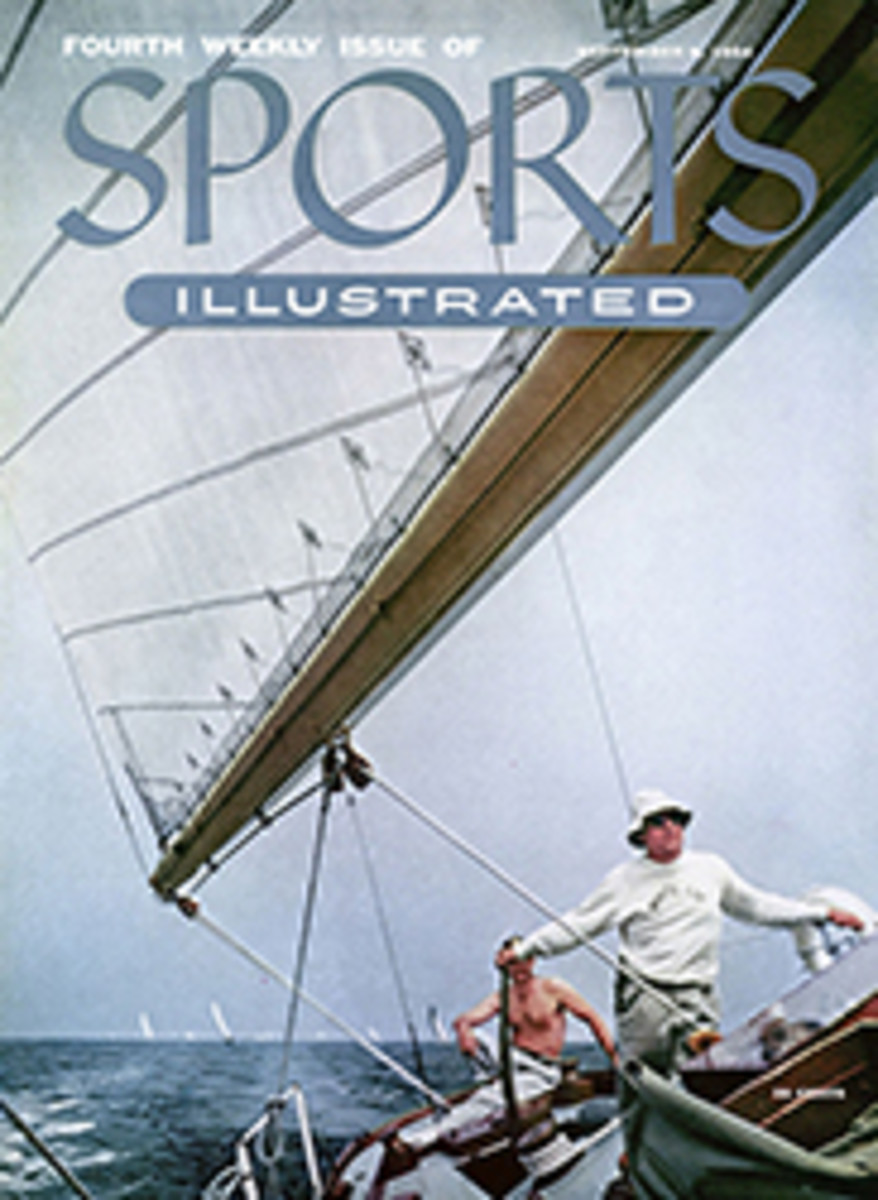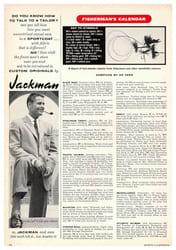
'OY BOWLING AB'
HELSINKI
IF You were to walk down Ruusulankatu, one of Helsinki's main streets, you would have to look closely to see the sign, no larger than a doctor's bronze door plaque: "Oy Bowling Ab." It marks the only academy in Finland's capital—a mere ten lanes similar to the basement alleys that were the vogue in the United States a quarter-century ago. Yet it might well be the most important bowling establishment in the world.
It was in Oy Bowling Ab (which simply means Bowling, Inc.) that the stars of seven nations competed in the International Federation of Bowling championships in June. It is here—the sport's easternmost outpost in the free world—that the U.S. has a tremendous opportunity to enhance its prestige politically as well as athletically.
It's difficult, at first, to appreciate what bowling means to these people. Only 2,625 men and one woman throughout this country of 4,000,000 inhabitants compete regularly under the sanction of the Finnish Bowling Association, which has adopted the rules of the American Bowling Congress. But when the five best bowlers of Helsinki, say, roll a team from the western port of Turku, several hundred rooters travel with the visiting team, and thousands—literally hanging from rafters and shinnied up pillars—jam the alleys for the match.
MUSIC FOR BOWLERS
The international championships here were preceded by a parade and opened by the mayor of Helsinki before a throng that included most of the diplomatic corps. A 20-piece band played the national anthems of the winning teams and individuals as they stood at attention on Olympic pedestals to receive their gold, silver and bronze trophies and medals. Competition was in Classes A, B, C and D. Wire agencies flashed results to newspapers in Finland, Sweden, Western Germany, Austria, Switzerland, the Saar and Yugoslavia, all of whom were represented.
"It was a bitter disappointment," reported Stockholm's most influential sportsnewspaper, "that the Americans, who sired the modern game of bowling, did not see fit to send a team." Oskar Holm, secretary of the Finnish Bowling Association, recognized that it would have cost a great deal for a U.S. team to come here, but he "deeply regretted" that the American Bowling Congress did not even deign to reply to an invitation to participate. The West Germans felt that at least GI's based in Germany could have represented their country in the championships.
GOODWILL FROM 1929
You see, the old-timers here still remember the great American team, built around national champion Joe Scribner of Detroit, which toured the capitals of Europe in 1929 and was feted by the late King Gustav of Sweden. Scandinavian bowling leaders still keep in touch with some of the men who accompanied the team—big, jovial Al Lattin, who later became president of the A.B.C. and now operates an academy at Lexington and 47th St., New York and Bill Landgraf, former president of the New York Bowling Association, who has done as much to promote the sport as any man in the U.S.
In 1952 at Zurich, Switzerland, the European nations organized the International Federation of Bowling. The federation has four divisions: (1) bowlers who follow A.B.C. rules; (2) those who roll outdoors on asphalt alleys; (3) those who roll ninepins or similar games in which scoring and equipment differ from tenpins, and (4) those who roll tenpins but not according to ABC rules. Prof. Ivan Krizanic of Yugoslavia is president of the federation. Sweden's Hans Berger is chairman of the division patterned after the A.B.C.
The Europeans have altered two A.B.C. regulations. In team competition the lead-off men of each quintet roll the entire ten frames (changing lanes after each frame) instead of one frame. This head-and-head bowling naturally leads to higher scores than the American system of rolling in turn. However, the rule change was necessary because in winter the alleys are not so well heated as in the States and contestants must wear heavy sweaters or coats when not bowling.
The second, more basic rule is: no cash awards. Bowling is strictly an amateur sport. But when you see a mature man on a pedestal, unashamed tears streaking down his face as his national anthem is played, and you sense his pride at having scored a victory for his country, the biggest sweepstakes prize in the U.S. seems cheap by comparison.
The A.B.C., the proprietors and the manufacturers could do themselves and America an immense service by sending a team to Oy Bowling Ab next summer and competing in the 1955 international championships in West Germany along the way.
ILLUSTRATION
PHOTO
ANNIVERSARY
THE DESERT FOX
Tex Rickard, owner of a Nevada gambling house, began his career as a fight promoter 48 years ago this week. He offered $30,000 in gold or a lightweight title match between champion Joe Gans and durable Batling Nelson at Goldfield, Nevada. Though eastern writers ridiculed him for promoting "in a desert," Rickard made a $30,000 profit on the fight, which Gans won in 42 rounds.

